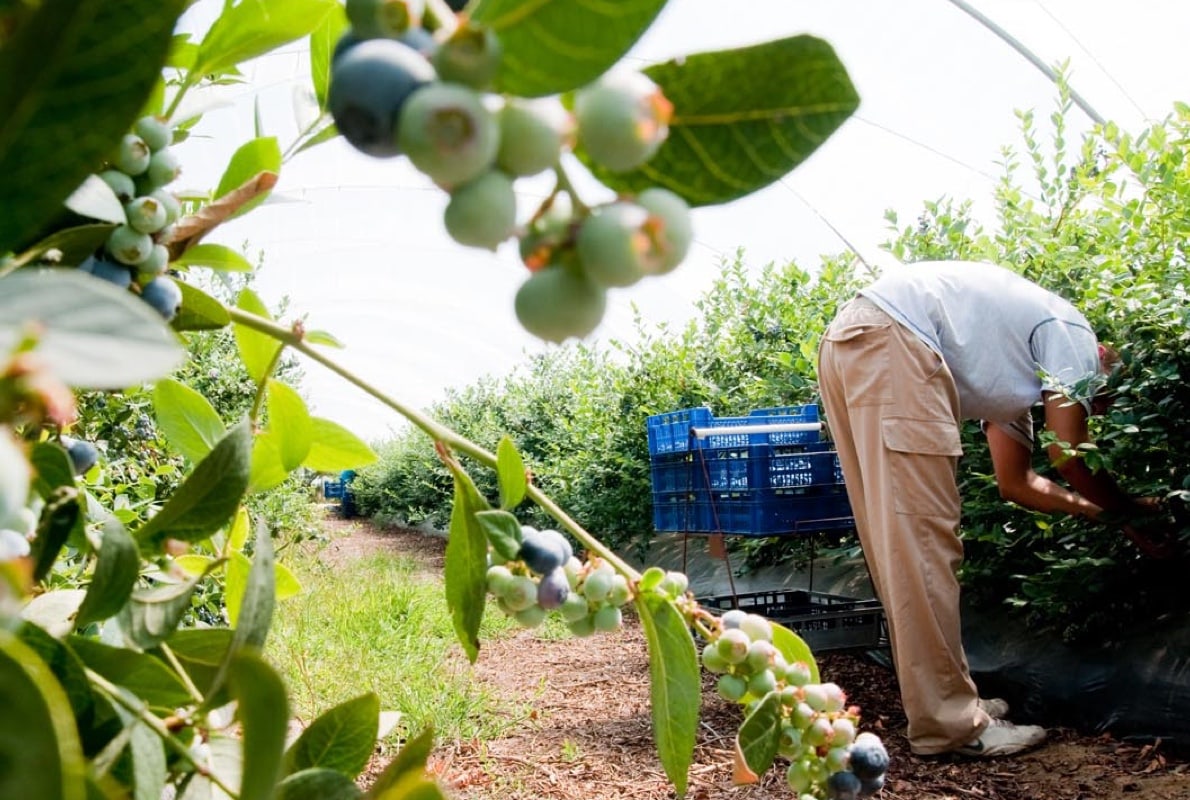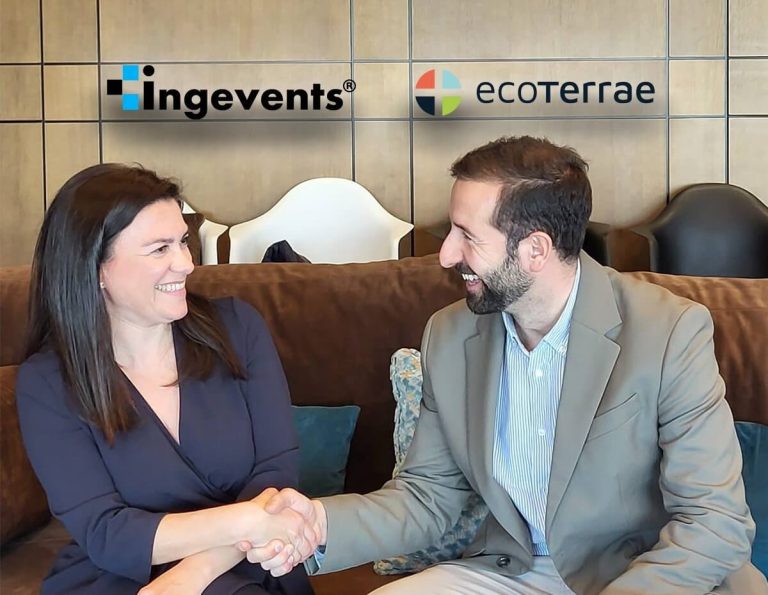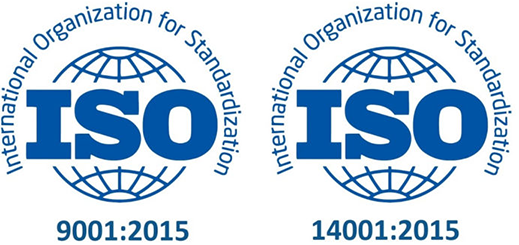En un contexto global donde los efectos del cambio climático son cada vez más evidentes y apremiantes, ECOTERRAE ha dado un paso crucial al realizar una visita presencial a las instalaciones de DELSUR, una de las principales distribuidoras de electricidad de El Salvador.
Este esfuerzo es parte integral de un exhaustivo estudio de vulnerabilidad y riesgos frente al cambio climático, diseñado para asistir a DELSUR en la confección de un plan de medidas adaptativas robusto y eficaz.
¿Cuál fue el objetivo de la visita?
El propósito de nuestra visita fue llevar a cabo una evaluación detallada y directa de las infraestructuras y operaciones de DELSUR. Nuestro equipo de expertos se dedicó a identificar las áreas e instalaciones más susceptibles a los impactos del cambio climático y a evaluar los riesgos potenciales que podrían comprometer la continuidad y la eficacia de los servicios eléctricos proporcionados por la empresa.
Desarrollo de la visita
Formación Previa a la Visita
Antes de nuestras visitas de campo, realizamos una formación exhaustiva con el equipo de DELSUR. Esta formación incluyó sesiones sobre conceptos clave de cambio climático, identificación de riesgos y técnicas de evaluación de vulnerabilidad. El objetivo fue preparar al personal para colaborar eficazmente durante las visitas y proporcionar información precisa y relevante.
Presentación Directiva al Comienzo de la Visita
Al inicio de la visita, se llevó a cabo una presentación directiva donde se expusieron los objetivos del estudio y la importancia de este estudio para DELSUR. Esta presentación buscó alinear expectativas y asegurar un entendimiento claro de los pasos a seguir, fortaleciendo el compromiso de la empresa y los departamentos con la iniciativa.

Trabajo de campo: reconocimiento de las Subestaciones e Instalaciones de la organización
Durante el proceso, realizamos varias visitas de campo a las distintas subestaciones distribuidas por todo el país. Estas visitas nos permitieron inspeccionar meticulosamente cada instalación, evaluando su estado actual y su capacidad para resistir eventos climáticos extremos como tormentas, inundaciones, deslizamientos de tierra y olas de calor. Se revisaron tanto las subestaciones eléctricas como las líneas de distribución, así como la infraestructura de soporte crítico.

Taller Participativo con Mandos Intermedios y Directivos
Para enriquecer nuestro estudio, organizamos un taller participativo que involucró a mandos intermedios y directivos de DELSUR. Este taller tuvo como objetivo aprovechar el conocimiento y la experiencia de todos los departamentos de la empresa, asegurando que cada área aportara información valiosa para el estudio. La colaboración interna es crucial para identificar puntos débiles y oportunidades de mejora desde múltiples perspectivas operativas.

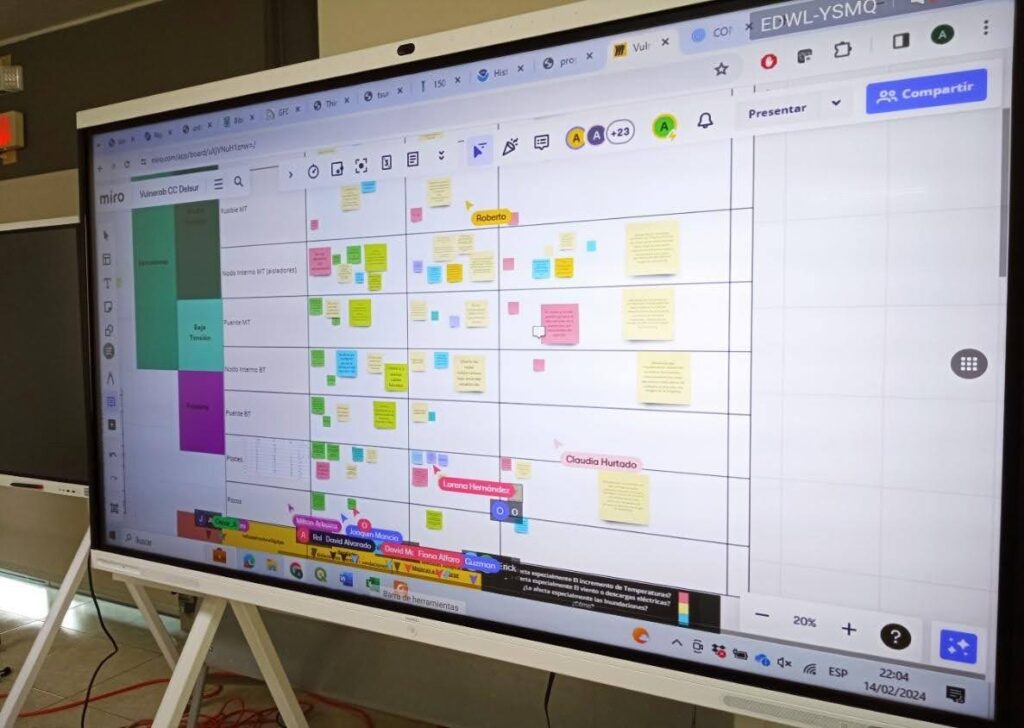
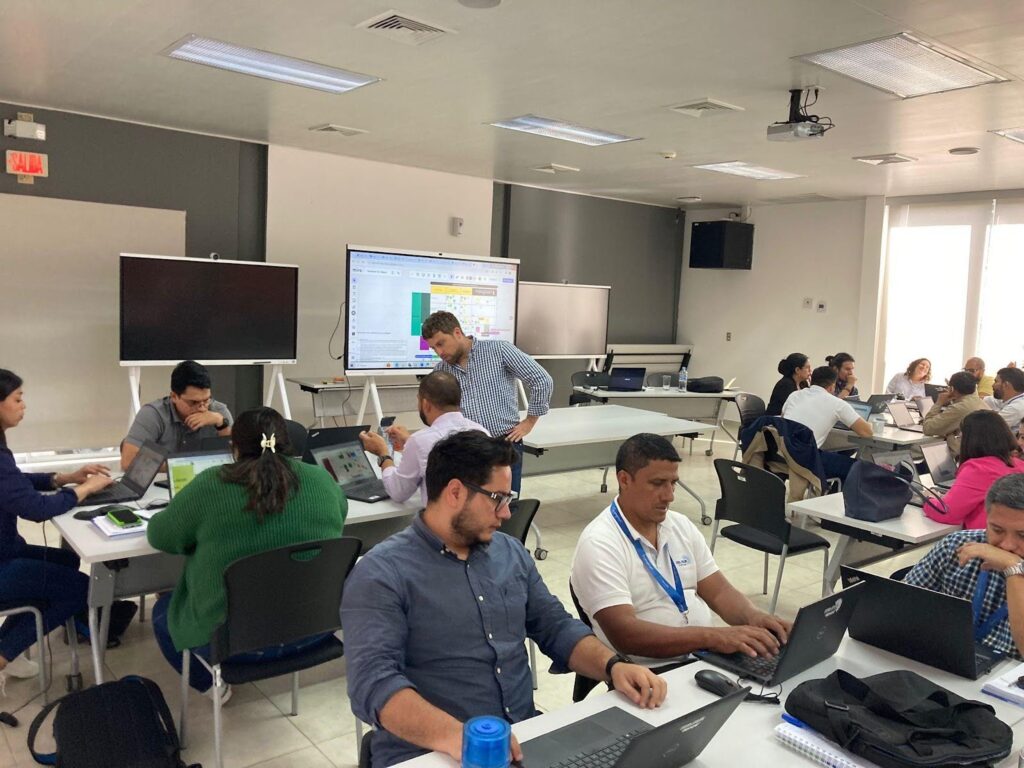
Presentación Taller Uso de herramientas para la recopilación de datos Mesas de trabajo
Colaboración y Compromiso
Nuestra colaboración con DELSUR refleja un compromiso compartido hacia la sostenibilidad y la resiliencia climática. Trabajando juntos, estamos sentando las bases para un futuro en el que la infraestructura eléctrica de El Salvador no solo sea más resistente a los impactos del cambio climático, sino que también opere de manera más sostenible y eficiente.

Asesoramiento ECOTERRAE
Uno de los propósitos fundamentales de ECOTERRRAE, es proporcionar soluciones innovadoras y basadas en la ciencia para enfrentar los desafíos ambientales y climáticos. Nuestra misión es ayudar a organizaciones de diversos sectores a adaptarse a un entorno climático cambiante, mejorando su resiliencia y sostenibilidad a largo plazo.
A continuación, podrá encontrar más información sobre cómo puede su organización adaptarse al cambio climático.
¿En qué consiste la adaptación al cambio climático y cómo podemos ayudar a su organización?
La adaptación al cambio climático implica el ajuste de sistemas naturales o humanos en respuesta a estímulos climáticos actuales o esperados, o sus efectos, para moderar el daño, aprovechar las oportunidades beneficiosas o afrontar las consecuencias. La adaptación es crucial para minimizar los impactos negativos del cambio climático en las personas, la infraestructura y el medio ambiente.
¿Qué elementos son claves para la mitigación de riesgos frente al Cambio Climático?
- Evaluación de Vulnerabilidad y Riesgos climáticos:
- Identificación de las áreas y sectores más vulnerables a los impactos climáticos.
- Evaluación de los riesgos potenciales, como inundaciones, sequías, olas de calor, y tormentas.
- Desarrollo de Estrategias y Planes de Acción:
- Elaboración de estrategias adaptativas que incluyen medidas específicas para reducir la vulnerabilidad.
- Implementación de planes de acción a corto, medio y largo plazo.
- Fortalecimiento de la Infraestructura y optimización de las operaciones:
- Mejoras en las infraestructuras críticas para resistir eventos climáticos extremos.
- Incorporación de tecnologías y materiales más resilientes.
- Optimización de las operaciones para asegurar la continuidad del servicio y la eficacia durante eventos climáticos extremos.
- Gestión de Recursos Naturales:
- Uso sostenible de los recursos naturales para asegurar su disponibilidad futura (energía, agua, materias primas, etc.).
- Conservación y restauración de ecosistemas que actúan como barreras naturales contra los desastres.
- Formación y Sensibilización:
- Formación continua del personal en temática de cambio climático y adaptación.
- Sensibilización de la comunidad y los grupos de interés sobre la importancia de la adaptación.
- Monitoreo, Seguimiento y Evaluación:
- Establecimiento de sistemas de monitoreo y seguimiento para evaluar la efectividad de las medidas adaptativas.
- Revisión y ajuste de las estrategias según los resultados obtenidos.
¿Cómo podemos ayudar a su Organización a incorporar la resiliencia frente a los riesgos del cambio climático?
En ECOTERRAE, estamos comprometidos en ayudar a su organización a adaptarse eficazmente a los desafíos del cambio climático. Nuestra metodología integral aborda múltiples aspectos críticos para garantizar una transición fluida y efectiva hacia una mayor resiliencia y sostenibilidad.
Comenzamos con una evaluación exhaustiva de vulnerabilidad y riesgos climáticos. Nuestro equipo de expertos lleva a cabo un análisis detallado para identificar áreas críticas y evaluar el estado actual de las infraestructuras y operaciones de su organización. Este diagnóstico inicial nos permite determinar los posibles impactos del cambio climático y establecer una base sólida para las siguientes etapas del proceso.
Con la información obtenida, diseñamos estrategias adaptativas personalizadas que abordan las necesidades específicas de su organización. Estas estrategias están orientadas a reducir la vulnerabilidad y aprovechar las oportunidades que el cambio climático podría presentar. Colaboramos estrechamente con su equipo para desarrollar un plan de acción que sea práctico y efectivo a corto, mediano y largo plazo.
La implementación de medidas concretas es el siguiente paso. Asistimos en el asesoramiento del mejoras estructurales y operativas para fortalecer la resiliencia de su infraestructura y optimizar sus operaciones. Esto incluye la adopción de
Para asegurar que todos los niveles de su organización estén preparados para enfrentar los desafíos del cambio climático, ofrecemos programas de formación. Estos programas incluyen talleres, cursos y sesiones de formación específicas, diseñados para equipar a su personal con el conocimiento y las habilidades necesarias para gestionar los riesgos climáticos de manera efectiva. Además, apoyamos en la comunicación y sensibilización de los esfuerzos de adaptación al cambio climático tanto internamente, dentro de su organización, como externamente, con los grupos de interés y la comunidad.
A través de este enfoque integral, ayudamos a su organización a minimizar los riesgos asociados a eventos climáticos extremos, mejorar la eficiencia operativa, asegurar el cumplimiento normativo, y fortalecer su imagen corporativa. Nuestro objetivo es garantizar la sostenibilidad a largo plazo y la protección de los recursos naturales, promoviendo prácticas responsables que beneficien tanto a su empresa como a la comunidad.
¿Qué beneficios contiene la adaptación al cambio climático?
Adaptarse al cambio climático no solo es una necesidad, sino también una oportunidad estratégica para fortalecer su organización en múltiples frentes. Al implementar medidas de adaptación al cambio climático, su empresa puede beneficiarse significativamente en diversas áreas:
En primer lugar, la reducción de riesgos es uno de los beneficios más inmediatos y tangibles. Al identificar y llevar a cabo medidas de mitigación frente a los riesgos asociados a eventos climáticos extremos, su organización puede asegurar la continuidad de sus operaciones, minimizando interrupciones costosas y mejorando la capacidad de respuesta ante emergencias climáticas.
La eficiencia operativa también se ve mejorada a través de la adopción de medidas y prácticas resilientes. Al optimizar procesos y utilizar recursos de manera más eficiente, su empresa puede reducir costos operativos y aumentar la productividad, lo que se traduce en una mayor competitividad en el mercado.
Otro beneficio clave es el cumplimiento normativo. Las regulaciones ambientales y climáticas son cada vez más estrictas y cumplir con ellas es esencial para evitar sanciones y fortalecer la reputación de su empresa. Adaptarse al cambio climático asegura que su organización esté alineada con las normativas actuales y futuras, demostrando un compromiso proactivo con la sostenibilidad.
La sostenibilidad a largo plazo es otro pilar fundamental. Al proteger los recursos naturales y promover prácticas responsables, su empresa no solo contribuye a la conservación del medio ambiente, sino que también asegura su viabilidad y éxito a largo plazo. Esto es especialmente importante en un contexto donde los consumidores y las partes interesadas valoran cada vez más las prácticas sostenibles.
Además, la adaptación al cambio climático mejora la imagen corporativa de su empresa. Al demostrar un compromiso activo con la sostenibilidad y la resiliencia, su organización puede fortalecer su marca y atraer tanto a clientes como a inversores que valoran la responsabilidad ambiental. Esta mejora en la percepción pública puede abrir nuevas oportunidades de negocio y alianzas estratégicas.
Para más información y para iniciar un diálogo sobre cómo podemos ayudar a su organización a adaptarse al cambio climático, no dude en ponerse en contacto con ECOTERRAE.
